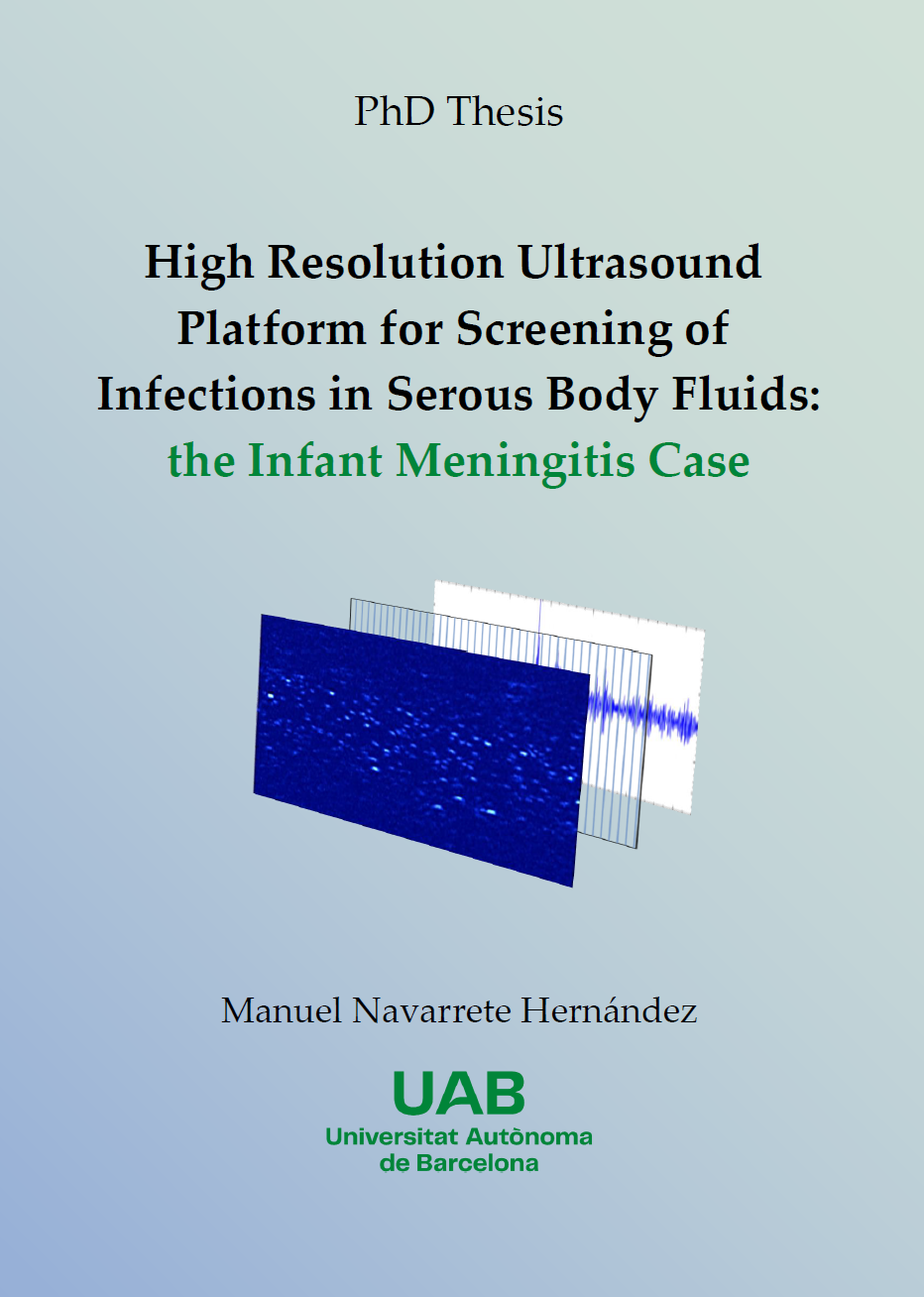Defensa de tesi de Manuel Navarrete
Defensa de tesi de Manuel Navarrete Hernández el pròxim 17 de Setembre a les 11:00h. Sala de Graus de l'Escola d'Enginyeria.

Doctorand: Manuel Navarrete Hernández.
Títol: High Resolution Ultrasound Platform for Screening of Infections in Serous Body Fluids: the Infant Meningitis Case.
Directors: Jordi Carrabina Bordoll i David Castells Rufas.
Tutor: Jordi Carrabina Bordoll.
Data i hora lectura: 17/09/2024, 11:00h.
Lloc lectura: Sala de Graus de l'Escola d'Enginyeria.
Programa de Doctorat: Enginyeria Electrònica i de Telecomunicació.
Departament on està inscrita la tesi: Departament de Microelectrònica.
Abstract
Infant meningitis remains a severe burden on global health, particularly for young infants. The urgency to solve this problem demands alternative solutions that can be widely applied. The assessment of white blood cell (WBC) concentration in the cerebrospinal fluid (CSF) is key to the diagnosis of meningitis. Ultrasound emerges as an ideal technology for such application, due to its low cost, portability, and safety. However, conventional ultrasound techniques are limited in spatial resolution to detect WBCs in the CSF.
This thesis presents the research and development process of a portable device that uses high-resolution ultrasound to evaluate WBC concentration in the CSF through the fontanelle of neonates and young infants. This novel approach aims to provide a non-invasive alternative to the traditional diagnostic methods for infant meningitis, offering a rapid and accessible screening tool. The developed platform employs a 20 MHz focused transducer, significantly enhancing spatial resolution and enabling the detection of the backscatter signals from microscopic WBCs. The whole system was built around a custom probe that allows the transducer to be mechanically controlled to map the area of interest in the CSF.
Hardware and software components were carefully integrated into an Artificial Intelligence (AI)-powered platform capable of accurate imaging and CSF analysis. In vitro evaluation and optimization process were essential to achieve high-quality images while complying with safety guidelines. Experiments using a tube phantom through neonatal fontanelle with 7-µm particles suspensions under different concentrations provided essential information on particle dynamics relevant to the diagnosis of meningitis. The developed system allows the acquisition of high-resolution images that provide excellent clarity and detail. In addition, the high acquisition rate enables to track the resulting particle pattern in the images with lateral coherence.
An Deep Learning (DL) model was deployed into the platform to classify patients based on CSF patterns according to WBC concentrations. This tool facilitates prompt treatment initiation if diagnostic thresholds are exceeded. Optimized for the platform-specific hardware, the algorithms integrated into the device ensure fast on-site analysis in a matter of minutes.
Clinical trials in Spain, Morocco, and Mozambique have yielded promising preliminary results that demonstrate the potential of the platform to support the diagnosis of meningitis. This thesis establishes a robust methodology for immediate and accurate CSF analysis, advancing the diagnosis of infant meningitis through a well-optimized and rigorously evaluated high resolution ultrasound platform.